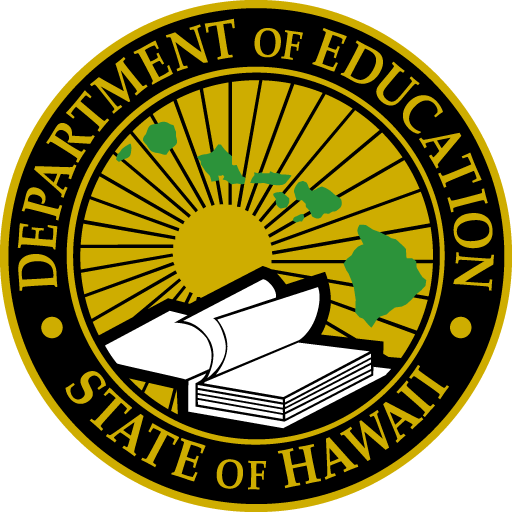E ola pono.E mālama i nā piko.
生活 pono。培養欣欣向榮的人際關係。
雖然健康教育的主要重點是培養健康技能,但這些技能必須結合優先風險主題背景下的功能資訊來解決。基於標準的健康教育必須適合年齡和發展、在醫學上準確,並在所有優先風險主題中提供事實資訊:
- 心理和情緒健康
- 健康飲食和身體活動
- 個人健康與保健
- 安全(預防意外傷害)
- 預防暴力
- 預防吸煙
- 預防酒精和其他藥物的使用
- 性健康與責任
註:學前健康教育與 夏威夷早期學習與發展標準 (HELDS).
課程要求
- 所有小學年級都必須接受健康教育。
- 中學/初中必須提供課程,使所有學生都達到夏威夷 6-8 年級的健康教育標準和績效指標。強烈建議但不要求中學每個年級接受一個學期(0.5 個學分;60 小時)的健康教育。
- 在高中,需要修讀一個學期(0.5 學分;60 小時)的健康教育課程才能畢業。
- 中學階段提供各種健康專門選修課程(例如同儕教育)。
- 有關國中升學和高中畢業的要求,請參閱 董事會政策 105-1 學術計畫 (PDF), 董事會政策 102-9 中等教育促進政策 (PDF), 和 董事會政策 102-15 高中畢業要求和畢業典禮 (PDF).
健康教育健康指南
全面的健康教育提供了教學基礎,幫助學生建立健康的關係並做出終身健康的決定。這 健康指南 支持以夏威夷為基礎的優質健康教育。
健康教育的健康指南圍繞著以下方面進行組織: 三個關鍵組件 涉及教學時間,包括營養教育,並強調文化相關和以“āina”為基礎的方法:
- 健康教育課程的教學內容重點在於支持健康飲食的知識和技能,並與 HIDOE 健康教育標準保持一致。
- 小學學生每週接受健康教育時間不少於45分鐘,中學學生每週接受健康教育時間不少於200分鐘。
- 營養教育包括以文化為基礎、親自動手的文化相關活動,例如食物準備、品嚐、參觀農場和學校花園。
性健康教育
全面的性健康教育有助於學生瞭解和掌握他們從童年到青春期和少年期的發展和成長過程。 有效、全面的性健康教育 為學生提供符合年齡、醫學上準確的內容和技能,讓他們知道並能夠為健康的人際關係進行溝通、獲得資源和支援,以及做出健康的決定。
一些州的法律和政策透過全面的性健康教育來幫助防止青少年懷孕和性傳染感染的傳播。
- 國家法律 (夏威夷修訂成文法 (HRS) §321-11.1) 為任何國家資助的性健康教育計畫制定了要求。
- 董事會政策 103-5 性健康教育 (PDF) 要求該部門實施全面的性健康教育。
- 學校所採用的課程描述應提供給家長/法定監護人,並應在任何教學開始之前發佈在學校網站上。
- 只有在學生父母或法定監護人事先書面請求的情況下,學生才可以免於參加性健康指導。
- 如果學生的父母或法定監護人提出書面請求,學生可能不會受到紀律處分、學術處罰或其他制裁。
家長或法定監護人也可以選擇不讓子女參加與以下項目相關的教學 爭議性問題.
父母或法定監護人可以寫信給學校管理人員或老師,要求將其孩子排除在特定的課程或活動之外。如果收到這樣的信件,必須提供學生替代的學習活動。父母或法定監護人有義務在課程或活動開始前通知學校管理人員或老師。
建議的教學材料:
進一步了解 HIDOE 中的性健康教育 (PDF)
性暴力預防教育
教導學生有關性暴力事件預防的知識,對於培育安全且充滿愛心的學校和社區是非常重要的。它讓學生掌握促進健康人際關係和尊重他人的資訊和技能。它還能幫助學生瞭解,如果他們或他們認識的人遭遇性暴力,該如何尋求支援。
向學生提供以預防為導向且適合其成長的性暴力預防教學:
- 身體自主(例如,身體意識和安全、同意、界限)、
- 識別和報告性虐待,以及
- 可取得的資源 (例如:可信賴的成年人、社區資源)。
部屬學校將負責在其面向公眾的網站上提供課程說明。在對學生開始教學之前,學校會通知家長和法定監護人即將開始的教學、如何預覽學校的教材,以及選擇退出的程序。
只有在學生家長或法定監護人的事先書面請求下, 學生才可以不參加預防性暴力教育。如果學生家長或法定監護人提出書面請求,則該 學生不得受到紀律處分、學業處分或其他處罰。
核准的教材:
- Elevatus 訓練課程:針對發展障礙人士的性教育,適合高度支援學習需求人士使用 (PDF)
- 對抗虐待兒童 (PDF)
- 健康智慧 (PDF)
- 瘋狂帽子健康課程 (PDF)
- NetSmartz (PDF)
- 正面預防 PLUS、特殊族群 (PDF)
- 權利、尊重、責任 (PDF)
- 第二步兒童保護單位 (PDF)
- 性虐待治療中心的性虐待預防課程 (PDF)
進一步了解 HIDOE 的性暴力預防.
一般健康教育資源
- 健康教育為何如此重要(Google 文件)
- 健康教育標準與主題概述(Google 文件)
- 學習健康設計
- 健康教育印刷品(Google Drive)
- 健康指南
- 你很重要!健康資源
- 利用學校花園進行健康教育
- 審查健康教育教學材料 (PDF)
- 2022 年夏威夷學校健康概況 - 重點報告 (PDF)
美國農業部非歧視聲明
根據聯邦民權法和美國農業部 (USDA) 民權法規和政策,本機構禁止基於種族、膚色、國籍、性別(包括性別認同和性取向)、殘疾、年齡或對先前民權活動的報復或報復而進行歧視。
該計劃的資訊可能以英語以外的其他語言提供。需要其他溝通方式(如點字、大字印刷本、錄音帶、美國手語)獲取計劃資訊的殘疾人士,應聯繫負責管理該計劃的州或地方機構,或致電美國農業部 TARGET 中心(電話:(202) 720-2600(語音和 TTY),或透過聯邦中繼服務(電話:(800) 87777-39)聯繫美國農業部。
要提出項目歧視投訴,投訴人應填寫表格 AD-3027(美國農業部項目歧視投訴表),該表格可從以下網址在線獲取: https://www.usda.gov/sites/default/files/documents/USDA-OASCR%20P-Complaint-Form-0508-0002-508-11-28-17Fax2Mail.pdf如需協助,可從任何美國農業部辦事處獲取,可致電 (866) 632-9992,或寫信給美國農業部。信函中必須包含投訴人的姓名、地址、電話號碼以及涉嫌歧視行為的書面描述,其詳細程度足以告知民權事務助理部長 (ASCR) 涉嫌侵犯民權的性質和日期。填妥的 AD-3027 表格或信函必須透過以下方式提交給美國農業部:
- 郵件:
美國農業部
民權事務助理部長辦公室
西南獨立大道 1400 號
華盛頓特區 20250-9410;或者 - 傳真:
(833)256-1665 或(202)690-7442;或者 - 電子郵件:
[email protected]
該機構是一個平等機會提供者。

